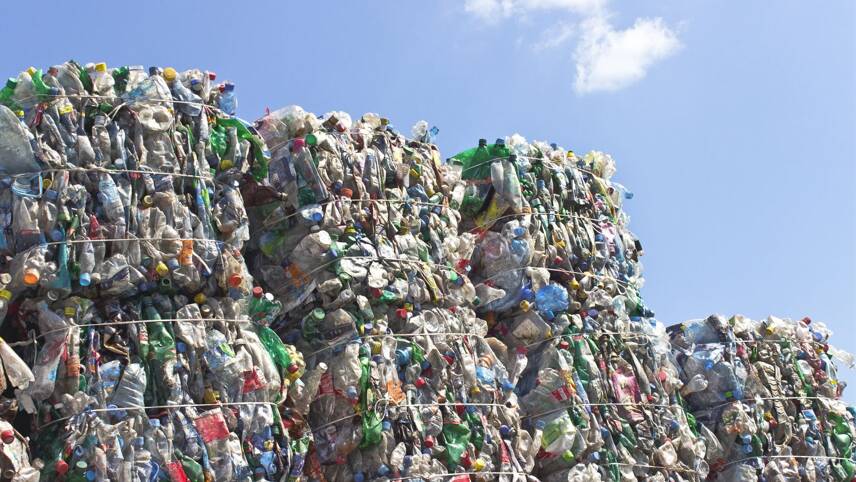Register for free and continue reading
Join our growing army of changemakers and get unlimited access to our premium content

The “war against plastic” (as UN Environment Programme Executive Director Inger Andersen has dubbed it) is one of the biggest challenges the world faces. Plastic takes hundreds of years to degrade, contributing to land and ocean pollution, and generates large amounts of greenhouse gases throughout its life cycle.
For Consumer Products & Retail (CPR) companies in the UK, the urgent need to act has been reinforced by both the existing UK Plastic Packaging Tax, and the new, extended producer responsibility (EPR) regulations, which came into effect on 28 February 2023. EPR requires producers to take responsibility for the environmental impact of the packaging they supply by making them pay for the collection and disposal costs of this packaging when it becomes waste. The aim of both pieces of legislation is to give companies financial incentives to reduce the amount of plastic and packaging they supply and improve recyclability.
Over time it is anticipated the materiality of costs for businesses will increase significantly as the price per tonne and requirements for using more recycled materials and the thresholds for recycling CPR products are raised.
Initially, UK companies that fall under the scope of the EPR legislation need to report on their packaging, and fees will start being charged in 2025. So now is a good time to re-examine your plastic reduction strategy – and in fact, your packaging reduction strategy overall, regardless of material – and explore your options.
Quick wins
Of course, CPR companies have been looking at ways to lessen the damage caused by plastic packaging for years, under four headings: reduce, reuse, recycle and compost.
Reduction is often the simplest of these and can take various forms. For example, plastic is often used to wrap goods during shipping, reducing the risk of damage. Increasingly, companies have realised that, thanks to sophisticated logistics and transportation solutions, there is no need to shrink-wrap boxes with plastic, which means they can both reduce plastic usage and save money. Other solutions can be as simple as reducing the size of a bottle or switching from plastic packaging to paper.
If you can’t eliminate or reduce the use of plastic, another option is to migrate it to a form that can be recycled; 86% of global plastic comes from six polymers and the means to recycle them are improving all the time. For example, polyethylene terephthalate (PET), commonly used for soft drinks bottles, is easily recyclable if the right infrastructure is in place to collect and sort it. As that infrastructure grows, the recyclability of PET will increase.
Four issues to consider
Once you’ve plucked this low-hanging fruit, though, plastic packaging reduction becomes more complicated. Here are four key issues to consider:
1) Rethink the economics
Many external considerations feed into decisions about packaging. Legislation is one; for example, if you factor the potential penalties that could result from not complying with EPR into your internal project economics calculations, it may lead you to accelerate the rollout of sustainable packaging options. Customer actions are another. For instance, one major retail chain is threatening to delist suppliers’ products if they don’t meet certain sustainability standards by 2026. And then there are the end consumers. Gen Z are particularly concerned about sustainability, and as they age and become the primary consumers of packaged goods, they will wield more influence. For the moment, affordability has replaced sustainability as the main concern for UK consumers, as a result of the cost-of-living crisis. But in the long term, CPR companies will ignore Gen Z’s concerns at their peril.
2) Look at the bigger picture
Plastic reduction cannot be achieved by one part of the company in isolation, as it has consequences. For example, reducing package size is good for the environment but may not sit well with your brand team, as it gives your product less presence on supermarket shelves. If your competitors all do the same, that’s not a problem – but if they don’t, you risk losing market share.
3) Work with your value chain
To reduce plastics usage, you have to work with your value chain in a different way. Just as all organisations need to collaborate with their supply chain to address their scope 3 emissions, so CPR companies need to understand where in the value chain the key opportunities can be found to reduce the use of plastic.
4) Make the sums add up
To date, plastics reduction has been a win-win, with the economic and sustainability cases aligned, but the next phase will require more sophisticated business cases. One reason CPR companies aren’t moving faster in plastic reduction is that they want to do it in a way that’s economically feasible, for their clients and for consumers. For example, biodegradable packaging can cost between five and ten times more than virgin fossil fuel-based plastics, and companies can’t pass on the higher costs to consumers. Currently, even when consumers are concerned about sustainability, price is often a deterrent. In one EY survey, only 31% of respondents said they would pay more for sustainably produced goods, while 50% said they are willing to spend on sustainable products and services when they believe it will also save them money. Perhaps the biggest challenge facing CPR companies today in packaging strategy is to develop sustainable packaging that is cost neutral. All of these challenges will involve making decisions with trade-offs.
In summary, stakeholder pressure is pushing the CPR sector to address plastic waste, and that pressure will only grow as legislation takes hold and as younger, more eco-conscious consumers establish their households. CPR companies need to accelerate the actions they are taking to reduce plastic waste in order to avoid both legislative consequences and consumer backlash.



Please login or Register to leave a comment.